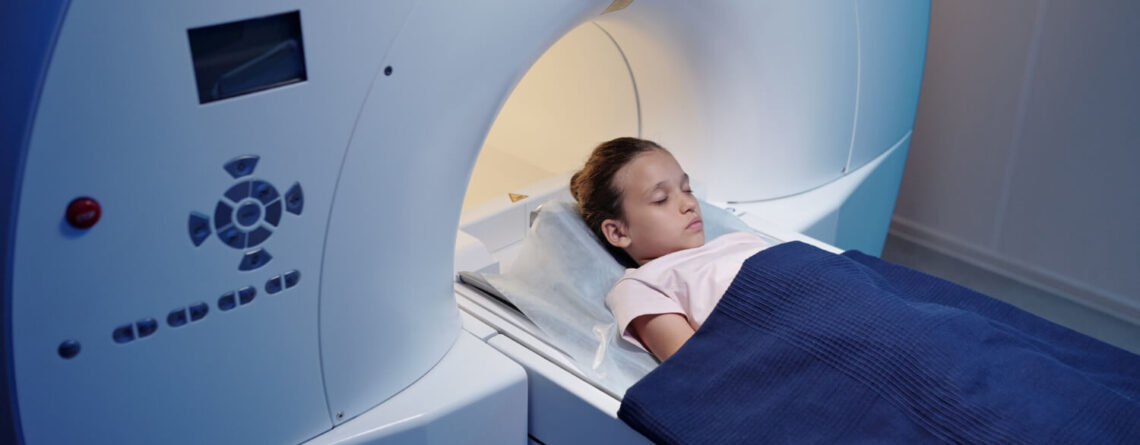Неходжкінські лімфоми – це ціла група злоякісних онкогематологічних захворювань (лімфом), які не можна класифікувати як специфічну лімфому Ходжкіна. Це пухлини, що розвиваються з лімфоїдних клітин-попередників В-, Т-лімфоцитів та NK-клітин (натуральних кілерів). У дітей даний різновид онкогематологічних утворень протікає більш агресивно, зате краще відповідає на специфічне лікування.
Типове місце локалізації лімфоми – певний лімфовузол або група анатомічно близьких лімфатичних вузлів. Такі форми неходжкінської лімфоми називають нодальними (або вузловими).
Існують також лімфоми, які вражають не лімфатичні вузли, а певні внутрішні органи (головний мозок, печінку, шкіру, селезінку, нирки, тощо). Такі форми лімфом називають екстранодальними. Зустрічаються також і змішані форми ураження – з залученням в патологічний процес і лімфатичних вузлів, і внутрішніх органів.

Особливості лікування лімфом у дітей в клініці Maimonides:
- Клініка працює в тісній кооперації з ізраїльськими найкращими онкогематологічними центрами та по їх еталонному зразку.
- Всі лікарі мають відповідну кваліфікацію, пройшли стажування в найкращих закордонних гематологічних клініках.
- В своїй роботі спеціалісти керуються лише сучасними світовими протоколами лікування, застосовують високоефективні та безпечні лікарські засоби, процедури.
- Підхід до кожного пацієнта індивідуальний. Тобто схема лікування не шаблонна для всіх, а препарати, їх дози, інші діагностичні та лікувальні процедури підбираються для кожної дитини окремо, враховуючи вік, стан здоров’я, тип пухлини, стадію процесу, побажання батьків, тощо.
- Всі інвазивні та болючі втручання у дітей виконуються тільки під загальним знеболенням, щоб в малюків не виникало ні, страху, ні болю, ні жодного іншого психологічного дискомфорту.
- Умови перебування у палатах та відділеннях дуже комфортні. Є всі необхідні речі для дітей та їх батьків, при відділеннях функціонують буфети, навчальні курси, ігрові кімнати. При необхідності батьки та дитина можуть отримати психологічну допомогу.
- У відділенні працюють не лише гематологи, а ціла мультидисциплінарна команда: онкологи, педіатри, променеві терапевти, хіміотерапевти, інфекціоністи, імунологи, реабілітологи, хірурги, та інші необхідні для створення безперервного лікувального процесу спеціалісти.
Неймовірних успіхів в лікуванні та діагностиці дитячих онкогематологічних захворювань, в тому числі і неходжкінських лімфом, досягли лікарі Ізраїлю. На консультацію та лікування до найкращих ізраїльських спеціалістів в області дитячої онокогематології приїжджають з усього світу. Одним з таких спеціалістів є професор Амос Торен, який завідує відділенням дитячої онкогематології ізраїльського медичного центру Хаїма Шиби. Саме ця людина керує проектом по дитячій гематології багатопрофільного медичного центру Maimonides.
Причини та види неходжкінських лімфом у дітей
Безпосередньою причиною виникнення будь-якої злоякісної пухлини, в тому числі й лімфоми, є генетична поломка в одній клітині, яка призводить до неконтрольованого росту та поділу цієї клітини з утворенням цілого покоління дефектних злоякісних клітин. Що саме викликає цю поломку – наразі невідомо.
Існують певні фактори ризику, які суттєво підвищують шанси на розвиток даного захворювання:
- Негативний вплив певних факторів зовнішнього середовища – певні хімічні речовини, наприклад, бензол, дія іонізуючого випромінювання.
- Певні вірусні інфекції – ВІЛ, герпес-віруси людини, лімфотропний вірус людини, вірус Епштейна-Барра, віруси гепатитів В та С.
- Первинні та вторинні імунодефіцитні стани, аутоімунні захворювання.
- Перенесені в минулому курси хіміотерапії або променевої терапії.
Всі неходжкінські лімфоми поділяють, залежно від клітин-попередників, з яких вони походять:
1. Лімфоми з В-лімфоцитів. Сюди відносять, наприклад, дифузна В-крупноклітинна лімфома, лімфома Беркітта, макроглобулінемія Вальденстрема, анапластична крупноклітинна лімфома, лімфобластна лімфома, тощо
2. Лімфоми з Т-лімфоцитів та NK-клітин. Наприклад, периферична Т-клітинна лімфома, лейкоз із великих гранулярних лімфоцитів, грибовидний мікоз, інші.
Симптоми та стадії неходжкінської лімфоми у дітей
На жаль, не існує таких клінічних проявів лімфоми, які би дозволили точно встановити діагноз та ще й на ранній стадії. Всі прояви неходжкінських лімфом неспецифічні та дозволяють лише запідозрити хворобу, підтвердити її можливо уже на наступному діагностичному етапі.
Найчастіші патологічні прояви лімфоми включають в себе:
- Тривала лихоманка, яку неможливо пояснити іншими причинами.
- Немотивована втрата ваги, відсутність апетиту.
- Нічна підвищена пітливість.
- Збільшення одного або декількох лімфатичних вузлів (периферичних або внутрішніх). Периферичну лімфаденопатію можна виявити самостійно – помітна гулька або її знаходять при пальпації. Внутрішню виявляють, як правило, випадково – при УЗД внутрішніх органів з інших причин.
- При ураженні певного внутрішнього органу будуть присутні відповідні симптоми – головний біль, неврологічні прояви при лімфомі головного мозку, жовтяниця, збільшення печінки – при ураженні печінка, тощо.
- У разі вторинного ураження кісткового мозку можу з’являтись анемія, тромбоцитопенія, тощо.
В залежності від розповсюдження пухлинного процесу в організмі, виділяють 4 стадії неходжкінської лімфоми:
- Патологічним процесом уражено один лімфовузол або одна анатомічна група лімфатичних вузлів. Або є одне екстранодальне ураження (внутрішній орган) без втягнення в процес прилеглих лімфовузлів.
- Уражено більше 2 груп лімфовузлів по одну сторону від діафрагми. Або є одне нодальне + одне екстранодальне ураження по одну сторону від діафрагми.
- Є ураження лімфовузлів по обидві сторони від діафрагми. Або ураження лімфовузлів вище діафрагми + ураження селезінки.
- Є 1 або більше ураження лімфовузлів по одну сторону діафрагми + 1 або більше екстранодальне вогнище.
1 та 2 стадії хвороби вважаються локалізованими, 3 та 4 – розповсюдженими та прогресуючими.
Важливо! Від стадії захворювання залежить схема лікування, тому проводити діагностику потрібно особливо ретельно, щоб не пропустити ні найменшого лімфатичного вузлика в організмі, який може страждати від пухлинного процесу. А допоможуть справитись з цією непростою ситуацією сучасні методи діагностики та інноваційне обладнання, які доступні для кожного нашого пацієнта.

Сучасні методи діагностики неходжкінських лімфом
Від правильної та своєчасної діагностики напряму залежить успіх лікування та прогноз при лімфомі. Тому в клініці Maimonides ми особливої уваги надаємо діагностичному етапу і дуже прискіпливо ставимось до отриманих результатів.
Всі наші пацієнти мають доступ до сучасних та безпечних методик діагностики, інноваційних генетичних тестів та найкращої апаратури для медичної візуалізації. Якщо якесь діагностичне обладнання відсутнє, пацієнт разом з батьками чи опікунами скеровується до дочірніх медичних центрів або ізраїльських клінік-партнерів Maimonides.
Діагностична програма при неходжкінських лімфомах виглядає наступним чином:
- Огляд, збір анамнезу та скарг у пацієнта.
- Аналізи крові – загальний, біохімічний, виявлення певних інфекційних маркерів, тощо. При лімфомах, як правило, змін в загальному аналізі крові не буває. Дуже рідко можна виявити певні відхилення по цьому аналізу.
- Біопсія ураженого лімфатичного вузла. Це надважливе дослідження, яке дозволяє верифікувати діагноз. Як правило, для аналізу забирають увесь уражений лімфатичний вузол, тому процедура з простої біопсії перетворюється на маленьку операцію, яку у дітей проводять під загальним знеболенням.
Всі біопсії пацієнтів медичного центру Maimonides відправляють для ревізії до найкращих патогістологічних лабораторій Ізраїлю, США, Німеччини. Завдяки таким «молекулярним перевіркам» ми точно впевнені в правильності діагнозу та підбору подальшого лікування. - Якщо по даним біопсії виявляють пухлинні клітини, то проводять наступний етап сучасної діагностики – імунофенотипування та цитогенетичний аналіз отриманого матеріалу.
Це дозволяє з 100% точністю верифікувати певний вид лімфоми, виявити специфічні рецептори на поверхні пухлинних клітин, знайти певні види мутацій в цих клітинах. Це потрібно, по перше, для підбору найбільш ефективної схеми лікування (різні види лімфом дають різну відповідь на певні різновиди лікування).
По друге, для створення ліків для конкретного пацієнта на основі отриманих даних про його пухлину, наприклад, таргетні препарати або терапія CAR-T-клітинами – це персоналізована онкологія, коли ліки створюють в індивідуальному порядку для кожного пацієнта, виходячи з даних про його пухлину. - Різноманітні методи візуалізації знадобляться на наступному етапі діагностики, коли лікар буде визначати стадію лімфоми, а саме обстежувати весь організм сантиметр за сантиметром, щоб не пропустити наймаліше нодальне чи екстранодальне вогнище. З цією метою використовуються як стандартні методи, так і надсучасні – цифрова рентгенографія, УЗД внутрішніх органів та м’яких тканин, КТ з контрастуванням, МРТ з контрастуванням, МСКТ, ПЕТ-КТ, ПЕТ-МРТ та інші.
- При підозрі на певне екстранодальне ураження можуть знадобитись додаткові методики обстеження. Наприклад при лімфомі шлунку – ФЕГДС (гастроскопія), при ураженні головного чи спинного мозку – люмбальна пункція та аналіз ліквору, трепан-біопсія при ураженні кісткового мозку, тощо.
На основі отриманих даних лікар дитячий онкогематолог виставляє точний розгорнутий діагноз, стадію хвороби, ускладнення при їх наявності. На основі цього діагнозу складається індивідуальний план лікування, який буде включати досвід найкращих ізраїльських центрів в лікуванні цього захворювання та світові стандарти медичної допомоги, засновані на доказах.

Інновації в лікуванні неходжкінської лімфоми у дітей
Основний метод лікування неходжкінських лімфом у дітей – хіміотерапія. Вибір схеми терапії залежить від того, наскільки добре певний підтип лімфоми реагує на первинну терапію. Це називається ризик-адаптована терапія. Якщо хвороба погано піддається первинній терапії, ці пацієнти проходять більш інтенсивні курси хіміотерапії.
При лімфомі у дітей хіміотерапія відбувається циклічно. Пацієнт отримує ліки декілька тижнів підряд, потім настає перерва кілька тижнів, далі курс повторюють до необхідної кількості разів. Тривалість лікування залежить від типу лімфоми, відповіді пацієнта на лікування, його індивідуальних особливостей. Стандартні хіміопрепарати, які використовують для лікування пацієнтів з неходжкінськими лімфомами – вінкристин, циклофосфамід, преднізон, доксорубіцин, метотрексат, етапозид, цитарабін.
Таргетна терапія – це сучасний напрямок персоналізованого лікування онкогематологічних захворювань. В основі цього методу знаходиться властивість таргетних ліків вибірково (не чіпають здорові клітини) та цілеспрямовано (атакують лише певний вид злоякісних клітин) діяти. Це сучасний та високоефективний спосіб лікування лімфом, який потребує попередньо молекулярно-генетичного аналізу злоякісних клітин (на етапі діагностики після біопсії), так як таргетні препарати розробляються під конкретний ген паразитичної клітини (персоналізована онкологія). Таргетна терапія, зазвичай, використовується в комплексі лікування разом з хіміотерапією, променевою та трансплантацією стовбурових гемопоетичних клітин. Приклади таргетних ліків – ритуксимаб, брентуксимаб, крізотиніб.
Імунотерапія – це назва методу лікування, коли для знищення пухлинних клітин використовують різні компоненти власної імунної системи пацієнта або препарати, розроблені на основі певних речовин чи клітин, що приймають участь в реакціях імунного захисту. Прикладом інноваційної імунотерапії при неходжкінській лімфомі є терапія CAR-T-клітинами.
CAR-T-клітини – це генетично-модифіковані лейкоцити пацієнта, які «навчені» активно відшукувати та прицільно знищувати певний різновид злоякісних клітин. Процес створення CAR-T-клітин – надзвичайно складний та дороговартісний, але така терапія дуже ефективна, особливо у пацієнтів, рефрактерних до стандартних схем лікування.
Променева терапія при лімфомах має другорядне значення. Вона використовується у разі стійкого та агресивного варіанту захворювання або розвитку рецидиву лімфоми.
Також у разі стійких до лікування лімфом або рецидиву хвороби, в комплексі лікування разом з інтенсивною хіміотерапією, імунотерапією, променевим лікуванням пацієнту може бути показана трансплантація стовбурових гемопоетичних клітин (пересадка кісткового мозку).
- Якщо донором виступає сам пацієнт до початку курсу інтенсивного лікування, така пересадка зветься аутологічною. Його стовбурові клітини відбираються на початковому етапі. Далі проводиться весь необхідний курс інтенсивної хіміотерапії, опромінення, біологічної терапії, тощо, після чого виконується пересадка, щоб відновити пошкоджений кістковий мозок після отриманого ефективного лікування.
- Якщо донором є родич або інша особа, що підійшла за певними параметрами, то пересадка називається алогенною. Алогенні трансплантації кісткового мозку мають більше ускладнень, в порівнянні з аутологічними, частіше розвивається відторгнення та реакція трансплантат проти хазяїна.
Всі пацієнти клініки Maimonides можуть стати учасниками клінічних досліджень, що відбуваються на базі провідних ізраїльських дитячих онкогематологічних центрів абсолютно безкоштовно. Деколи – це єдиний шанс врятувати життя малюку та забезпечити йому довге майбутнє без болю.

